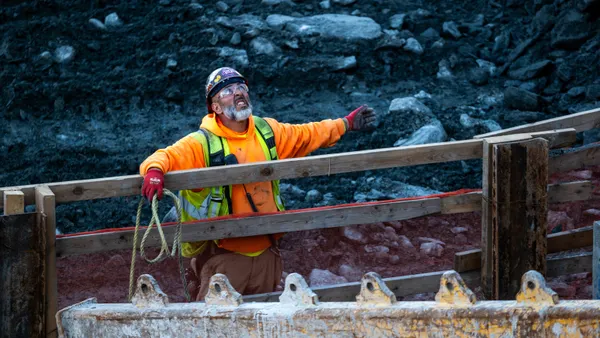Dive Brief:
- FMI Capital Advisors' 2018 M&A Trends for Engineering and Construction report concluded that the market for industry mergers and acquisitions was robust in 2017, with many firms continuing to position themselves to take action on President Donald Trump's infrastructure plan, although implementation won't likely happen until after November's midterm elections, according to Engineering News-Record.
- According to the report, other factors that are driving M&A activity include: More opportunities to expand into alternative delivery methods and attractive regional markets; a desire to increase capacity through vertical integration; a way to staff up in light of the continuing labor shortage; better financing options for publicly held company deals; and an exit strategy for retirees who don't plan to leave their businesses to children or other relatives. The report also said that the level of M&A activity remained fairly consistent from 2016 to 2017, but average transactions grew in size, including those in excess of $1 billion.
- As part of its annual report, FMI conducts a survey of industry executives. In the 2018 survey, 68.8% of those who responded said M&As are part of their companies' strategy this year versus 60% in 2017.
Dive Insight:
One of the biggest deals of 2017 was the $3.2 billion purchase of CH2M Hill by Jacobs Engineering, combining CH2M's 20,000 employees with Jacobs' 54,000 workers. In addition to their respective infrastructure and public utility specialties, CH2M and Jacobs are expected to be uniquely positioned to tackle a broad range of work if Trump's federal plan comes to fruition.
Some strategically driven M&As involve the union of design firms and construction firms looking to vertically integrate to expand delivery capabilities, the Engineering News -Record report pointed out. AECOM last year was part of a notable vertical integration deal, purchasing Oakland, California-based Shimmick Construction for $175 million. According to The Wall Street Journal, AECOM was looking to expand capacity in California in preparation for increased infrastructure activity there.
Last year also saw construction companies take measures, in addition to mergers and acquisitions, to prepare for any infrastructure plan the White House might undertake. AECOM, for example, said it would invest $3.5 billion in an effort to become the largest infrastructure construction firm in the world and launched a division devoted to federal contracting. Through its new business unit, AECOM officials said the company would push for more design-build and integrated project delivery projects.













